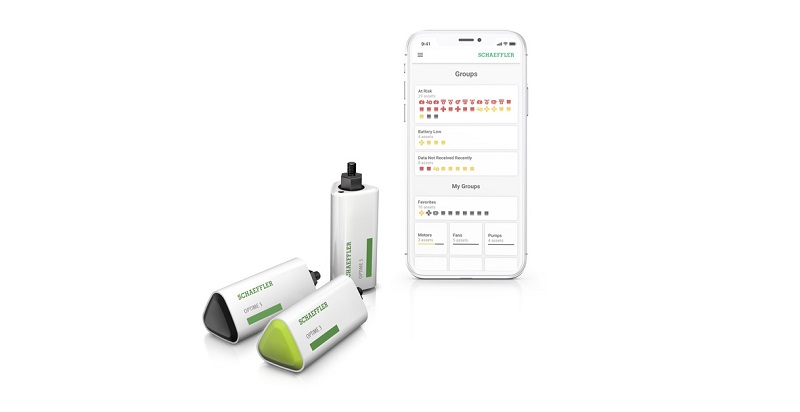OPTIME makes Condition Monitoring easy, cost-efficient and highly scalable for the first time. In this way, mills can tackle unplanned downtimes holistically.
October 14, 2020

Leading industrial and automotive supplier Schaeffler India has launched a new product called ‘OPTIME’. It is an efficient and easy-to-use low-cost solution designed specifically for comprehensive condition monitoring of all process-critical assets across entire machine and equipments. Schaeffler OPTIME provides automated condition monitoring at a cost-effective but efficient manner making it very convenient for maintenance personnel and facility operators. The India launch of OPTIME is a part of the overall launch in the entire Asia Pacific region.
OPTIME is an easily scalable system that consists essentially of wireless, battery-powered vibration sensors, a gateway, and an app to visualize the resulting analysis data. The data captured by the sensors are analyzed using specially developed algorithms that draw on Schaeffler’s technical expertise, which is developed and refined over many decades. OPTIME provides several weeks’ early warning of damage to machine components such as electric motors, fans, and pumps. It also provides early warning of imbalances, misalignments, and knocking.
Introducing the product Mr. Harsha Kadam, CEO, Schaeffler India and President Industrial Business, said, “The impact of unplanned downtimes is far more damaging than revenues alone, and brings forth multiple challenges in any manufacturing or processing unit. For cost reasons, permanently installed continuous condition monitoring systems are typically used only for production machines that are directly process-critical. Therefore, in process and automation industries, it is not uncommon for up to 95 percent of all assets in a production facility to be either totally unmonitored or monitored only periodically by means of route-based, manual measurements. With Schaeffler OPTIME, however, comprehensive and automated condition monitoring is now a cost-effective proposition for maintenance personnel and facility operators.”
He further added that, “With OPTIME, in-house maintenance crews and external service contractors receive specific recommendations on the remedial steps required, so they can easily plan their maintenance work, manpower requirements, and spare parts procurement in a timely and cost-efficient manner.”
OPTIME can be installed and initial operation carried out without any prior condition monitoring expertise, and several hundred measuring points can easily be set up in the space of a single day. The vibration sensors are attached to the monitored assets by means of screws or adhesive, and are activated by the accompanying app, which connects to them via near-field communication (NFC). All installed sensors communicate autonomously with each other and the gateway, thereby forming a dedicated mesh network that ranks among the most reliable and energy-efficient types of IoT networks in use in industry today. The sensors in the mesh network transmit machine KPI data and raw vibration and temperature data via the gateway to the Schaeffler IoT Hub. The hub analyzes the data, and the results are displayed in the app, which supports a very wide range of end devices commonly used by maintenance teams and plant operators. Alternatively, the analysis results can be made available for integration into the customer’s own IT environment via a REST API.
The app provided along with Schaeffler OPTIME presents trends in graph form and visualizes the severity of incidents using traffic light colours, alarm states, and other information. Assets can be grouped according to users’ requirements, and their condition can be presented in a range of user group-specific views.
OPTIME can yield cost savings of around 50 percent compared with monthly offline measurements made using hand-held devices. It also provides better-quality monitoring than most wireless online CMS systems thanks to its complex, algorithm-based analytics. Moreover, OPTIME can be used for a multitude of assets for which condition monitoring was previously not commercially viable, which makes it the first solution capable of providing an overview of machine states that is truly comprehensive and encompasses all subsystems and auxiliary assets. This is important, because the automated condition monitoring of all assets is fundamental to the reliable prevention of unplanned machine and plant shutdowns.


